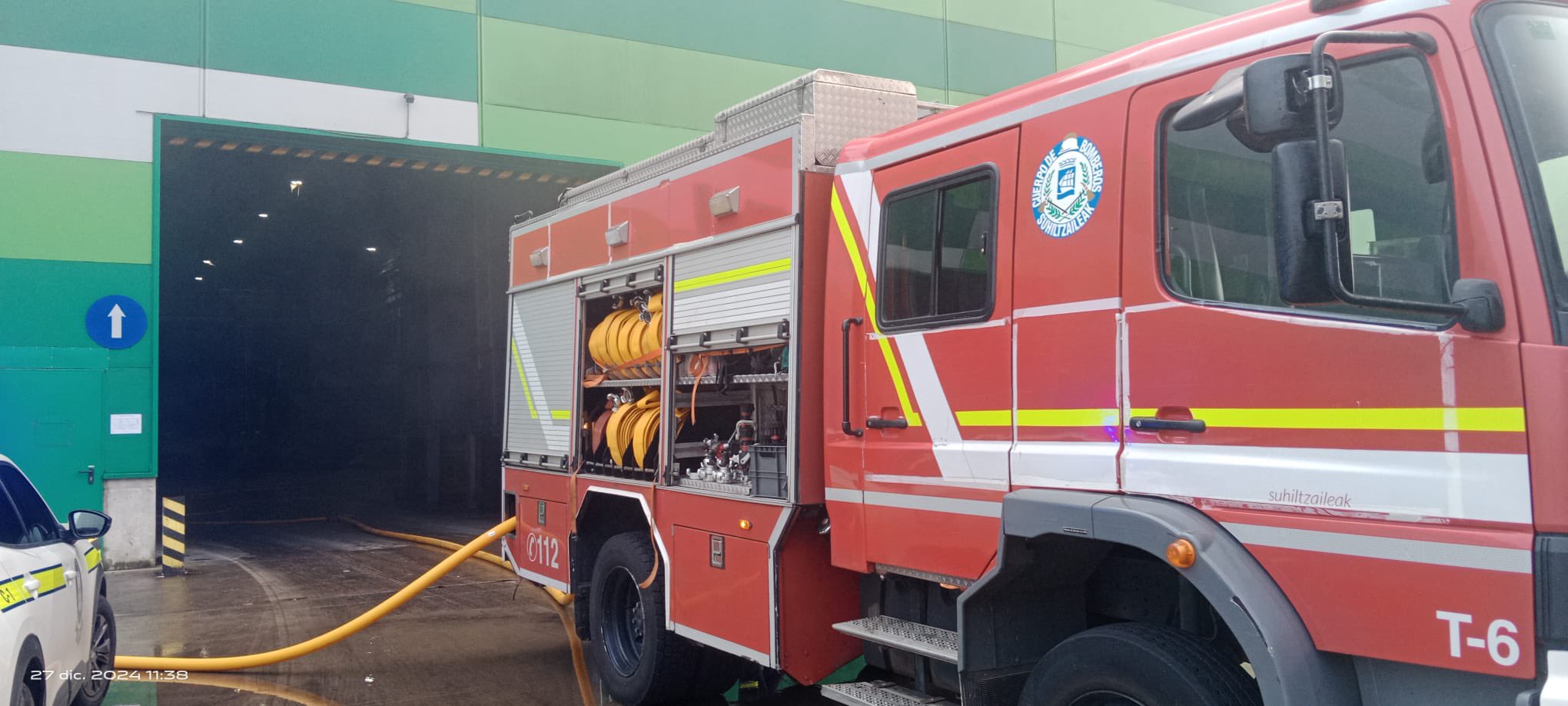Bad business for the peoples of Gipuzkoa
- This autumn the Gipuzkoa Waste Consortium will award the first phase of the Zubieta incinerator. This autumn, the Consortium's exit tests will also be carried out between several municipalities. The cost of the project – more than EUR 1 billion – and the harsh conditions that will be laid down to pay it, will put upside down the work done so far in these municipalities towards sustainable waste management. Are citizens willing to give this debt to their descendants?

When many citizens counted the days that were missing for isolation – or the beginning of the provisional summer day – the Gipuzkoa Waste Consortium (GHK) red a date on the calendar: 28 July. Approve the specifications for the award of construction and management of the Zubieta incinerator.
The peaceful and spectacular protests of Ezker Batua, the criticisms of the GuraSOS association and the Osasuna medical team, the head of the Gipuzkoa Council, had pressed the anti-incineration movements in early summer. At the end of July, GHK, a public company that promoted the Zubieta project, formed by the Provincial Council and the municipalities, predicted that most people were going to be on the beach, but in spite of that, hundreds of people gathered in Donostia-San Sebastian with white sheets under the motto Your business, our cancer, to denounce “one of the biggest squandering puzzles.”
While this was happening, the movements that were taking place in various municipalities went much more unnoticed, after knowing what the project of the incinerator of 200,000 tonnes of waste was going to affect.
Modern words, old formula
Waste management is the responsibility of the municipalities and they have been grouped into the communities. They subsequently set up the waste consortium, which in 2007 reformed the GHK company for the construction of the incinerator. In addition to the steps taken towards centralization, there are those that will be taken in the field of privatisation. According to the plan of the consortium, for 35 years the incinerator and waste of citizens will remain in the hands of a contractor. The representatives of the Deputy have described the operation as a public-private partnership or a “public-private friendship”.
It is an old and well-known formula written in English. The company will assume a public service and if it is not profitable the benefits will be guaranteed by the Administration, although the Administration should not provide other basic services to the citizens. Well-known by water defenders in Thessaloniki, Chile
If entry into the consortium is possible, so is the exit. The award of the incinerator is not yet signed and several municipalities have already announced that they will consider this possibility.
citizens seeking to recover privatized pensions or the pockets of motorists and Biscayan people crossing the Artxanda tunnels.
Before the decisive meeting of the GHK in July, we knew through the press that the heavy backpack that the award of the incinerator will put to the Gipuzkoans: a cost greater than EUR 1 billion, an interest for companies of 10.5% (see graph page 26), unfair quotas based on a single fee… Is there anyone who wants to be part of such a club?
A study carried out by Dr Deloitte for the GHK consortium has made it even clearer how municipalities want to tie up the incinerator. The 10-page control report indicates that the debt generated by the construction and management of the Zubieta plant should be met "as a must and a priority" by the municipalities of Gipuzkoan for 35 years.
The private company that explores the incinerator will also have more “safeguard” to secure the business of our waste. In the event that a municipality does not pay the fee imposed by the consortium, the Council will “liquidate” the money for other purposes – municipalities receive the largest money for the annual budget from the foral fund. Furthermore, it will not be able to sell the waste to third parties, however cheap and better they may be. What if you decide to leave the consortium? It shall pay equally the debt and compensation to the other municipalities resulting from the separation.
But if it's possible to get in, also get out. The award has not yet been signed and several municipalities have announced that they will consider this possibility. These are countries that have taken significant steps in waste management, with very high recycling rates, few kilos of rejection per inhabitant and which the European institutions have set as an example on more than one occasion. “Usurbil recycles over 83 percent, how are we not going to study that possibility?” says Usurbil Mayor Xabier Arrangi.
In Usurbil, very close to the place where the incinerator is to be built in Zubieta (6,000 rooms) The fight against this project has been marked by citizenship. The first referendum on incineration in Gipuzkoa took place from 21 to 23 October: “We will value the outcome very positively,” says Arrangi, “because the word of citizenship is a concrete mandate for us.” On 26 July the municipal plenary approved a motion saying that Usurbil has no place in the “institutional waste architecture” of Gipuzkoa and it was decided to set up a commission to study how to leave the San Marcos community technically, legally and economically. The Commission shall submit a report “within a maximum period of two months”.
The same was approved in Oiartzun and Zaldibia, as well as in Hernani, where the City Hall took over the test. Speed and tempos are variables that need to be measured well in this matter: companies have the time to submit to the competition within a few weeks and the consortium wants to award the works by the end of October.
A huge economic burden
If the exit of these municipalities is carried out, it is difficult to know how it will influence the internal balance of the GHK, but it is clear that the other partners will be heavier to build and maintain the incinerator. And the anticipated economic burden is not, according to a document that ARGIA has been able to obtain.
A municipal financial controller in Gipuzkoa has conducted a simulation exercise to determine the amount to be paid by the incinerator in 35 years for all municipalities of the territory. To this end, it has considered a “conservative” figure of EUR 1 billion, as companies are going to make downward tenders in the award – although many assume that the cost of the project will ultimately be much higher; Deloitte himself says it will be EUR 1.407 million.
According to the simulation, for example, Donostia-San Sebastian will have to put EUR 7.4 million a year to burn waste up to 2051, three times more than it gives to Tabakalera. Zumarraga will have to pay a total of EUR 13 million in an invoice for the amount that Arcelor asked the Basque Government to keep the steel plant open. Location of Gipuzkoa
With the EUR 780,000 that will be spent each year by the Hernani incinerator, the city council can pay the home aid service, according to the Hernani Zero Zabor group.
in the smallest demographic, Gaintza, its 120 inhabitants face a mortgage of EUR 167,000. In Hernani, with the EUR 780,000 it has to spend each year for the incinerator, the city council can pay a home help service, according to the Zero Zabor group. However, this group has also performed other calculations for the case of Hernani, taking several data in the hand.
Six years in Hernani (19,000 hab.) door-to-door collection system for sorting waste at source. Since then, it has a recycling rate higher than 75% and composting has also spread to the majority of the population. But as in the case of other peoples with the same results, the GHK rewards this effort: the consortium has increased the rejection rate by 11% and the organic waste rate by 77%. And yet Hernani would find it much more expensive to be an incinerator than to continue with the current system, namely EUR 21 million more.
“The GHK management model is not sustainable for anyone and less for municipalities that do well,” says a working document from the Hernani Zero Zabor group. Very soon the model that we have worked with very good results will go upside down in the last six years.” In addition to healthcare and services, in the loss of jobs – as the Manu Robles Arangiz Foundation has investigated – 7,000 jobs can be created in the CAV and 900 in Navarre if all waste is classified at source – and in their pockets they will have the hole left by the incinerator, as the annual rate of garbage paid by each family to the city council can go from 95 to 300 euros.
On 2 March, the mayor of Ermua, Carlos Totorika, asked the consortium whether it would cost the municipality of Bizkaia to leave the institution – although he is a member of Debabarrena in Bizkaia – because he thought it would be cheaper to transfer the waste to Zabalgarbi. The GHK put price and its President and Environment Deputy, José Ignacio Asensio, informed him: EUR 9 million. It included, among other things, the debt accumulated so far by the entity, including the well-known swaps signed with the banks, but also the costs generated by the construction and operation of the Zubieta incinerator over the next two decades, even though it is not yet allocated.
This outrageous figure was a clear message to all those who want to leave the GHK. However, in Hernani the Zero Zabor group has compared several sources, so the amount of money that can be given in the case of Hernani is 1.4 million. Indeed, there is great uncertainty about the legality of including future investments and debts in the liquidation. In the words of this group “it is worth betting on self-management and leaving the GHK. Continuing there is a ruin for Hernani.”
The preparation of the legal framework is therefore one of the main functions of municipalities wishing to leave the consortium network. It does not seem that the following day it will be so technically difficult to provide solutions to waste, as the amount of rejection to be managed is very small compared to other countries. Those who remain inside, in addition to the debt left to them by the incinerator, will have to face up to the unknowns of the second phase of the project.

Who decides?
The Council and the municipalities are represented in the Waste Consortium of Gipuzkoa through the mancommunities. But in the assemblies of the GHK not all have the same weight and decision-making capacity, in addition to the demographic weight, it is fundamental for the balances to be made in one direction or another. On 28 July there were 89.7 votes (in grey) in favour of the approval of the specifications of the incinerator and 10.3 against (in pink), as can be seen from the list below.

Read the article in English argia.eus/english.























